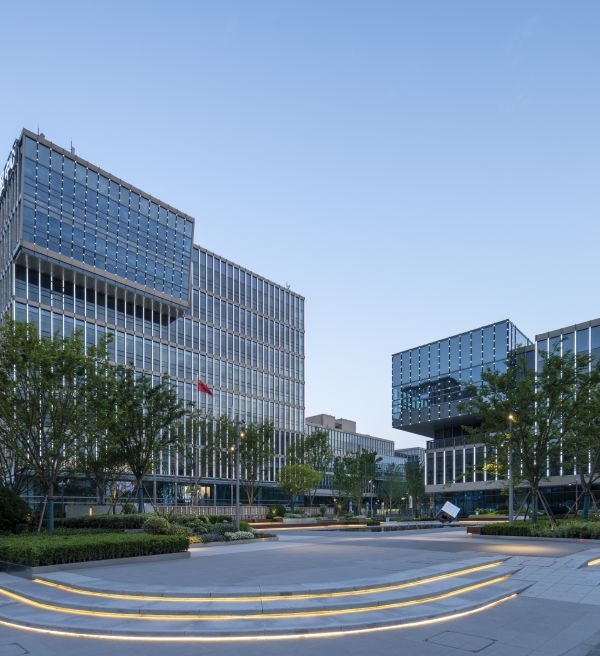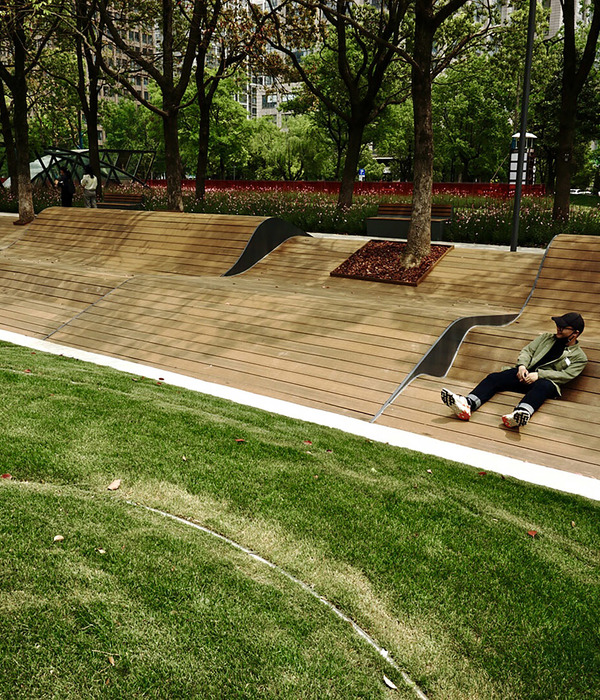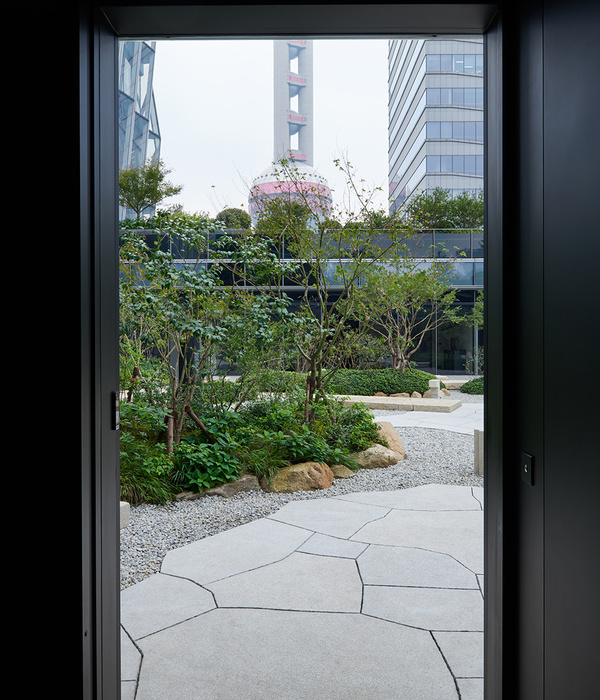▲因地制宜的播种计划:将实验结果转化为定制的种子组合以及恢复性项目的播种计划,这一过程加强了景观研究方法和材料实践在设计中的应用。Site Specific Seeding Plan: The translation of the experimental findings into a custom seed mix and seeding plan for the HMI restoration project reinforces the application of landscape research methods and material practices in design.
© Mahan Rykiel Associates
PROJECT NARRATIVE
Hart-Miller Island (HMI) is a 1,140 acre island located in the upper Chesapeake Bay in Baltimore County, Maryland. It is a novel ecosystem, built from the remnants of Hart Island and Miller Island using 100 million cubic yards of sediment dredged from Baltimore Harbor shipping channels between 1984 and 2009. Since its closure in 2009, state agencies have worked to restore the island habitat with the intent of providing public access recreation and natural resource enjoyment to the citizens of the state. However, restoration efforts in the 800 acre North Cell have been complicated by dynamic site conditions including a fractured hydrological regime, acid sulfate soils, and pressure from invasive species – notably Phragmites. This study details the field research, restoration strategy, and experimentally derived seedling emergence rates used by the team to develop a custom seed mix and seeding rate calibrated to the design intent, targeted outcomes, and existing conditions of the project site.
Recognizing the complexity of HMI and the lack of an adequate natural analog reference site, the team conducted primary field research to document and understand the project site’s specific biogeochemical systems in order to inform the design of a restoration strategy that would be cost-effective and publicly engaging. Field research included a transect study and measurements of water levels, soil pH, vegetative cover, and plant diversity in quadrats. Variability was notable for each of these site features with water levels in the study area fluctuating between periodically inundated, persistently inundated, and standing water. Soil pH ranged from as low as pH 3 to as high as pH 7 – a common feature of novel ecosystems constructed of dredged sediment, which are subject to oxidation reactions that release hydrogen ions during the translocation of anaerobic marine minerals to aerobic terrestrial environmental. Vegetative cover patterns were inconsistent showing areas of 100% cover and areas of 30% cover. Plant diversity was limited to nine (9) genera commonly found in disturbed sites, with Phragmites as the the most prevalent genus encountered.
In developing a restoration strategy for the complex conditions at HMI, the team designed a living landform intended to stratify the site’s geohydrology, grade separate Phragmites from targeted habitat areas, and diversify the plant community structure. Species for this restoration design drew on state sponsored studies and precedent projects, and were selected for their individual tolerances to survive the documented variability of field conditions, as well as the capabilities of the composite community to fill spatial, functional, and temporal niches in the proposed living landforms. This included pairing species with complimentary above ground and below ground structures, as well as providing diversity in seasonality and successional trajectories to offer year round habitat opportunities and to support complex emergent ecologies.
To implement the proposed restoration design for HMI, the team needed to convert the conceptual plant palette into a custom seed mix, which could be communicated to contractors via targeted seedlings/meter squared and effective seeding rates. However, in reviewing published germination rates provided by seed vendors, the team realized that they were derived from studies in controlled conditions, which diverge dramatically from the existing conditions at HMI. Recognizing this data gap, the team initiated a translational research project to study seedling emergence in soils excavated from HMI to calibrate a site specific seeding plan to the actual conditions of the island. In pursuing this research, the team deployed industry standard methodologies for native seed production and propagation based on guidance from the United States Department of Agriculture, the United States Forest Service , and the Plant Conservation Alliance National Seed Strategy for Rehabilitation and Restoration.
The experimental design of the germination study compared published germination rates of the 15 species selected for the restoration design as a control with seedling emergence of the 15 selected species in soil collected from the project site, and with seedling emergence of the 15 selected species in soil collected from the project site treated with agricultural lime. Materials utilized in the germination study included:
• Grow tower with adjustable LED lights
• Six 72-cell growing trays
• Sandpaper
• Play sand
• Seeds
• Site soil/dredged material
• Agricultural lime
• Watering can
• pH test probe
• Camera
Three primary methods were used in the germination study including:
• Soil Preparation: Dredged material for the germination study was collected from three random locations within the study area. The material was brought back to the lab and blended to create one composite soil sample for the germination trials and pH was documented. Half of the material was amended with lime at a 1:30 ratio by volume and half was left unamended. Three 72-cell trays were filled with the amended dredged material and three 72-cell trays were filled with unamended dredged material
• Seed Preparation: Seeds were prepared for the germination trials using industry standard protocols, which are tailored to the needs of the specific plant species under investigation. The three preparation methods were scarification, stratification, and direct seeding. The scarification method included laying seeds on a sheet of P150 sandpaper and scraping over the top with P60 sandpaper until approximately 5%-10% of seeds are visible crushed. The stratification method included mixing seeds at a ratio of 1:3 with damp play sand and then storing in a refrigerator for 2-12 weeks as needed for each species. The direct seeding method included no pre-treatment of seeds prior to planting. After soil and seed preparation 18 cells of each species were seeded in amended and unamended dredged material (for a total of 36 cells of each species). Seeding rates for each species in a cell were based on published dormancy percentages with the aim of one live seedling/cell (e.g. for species with an 80% dormancy rate, the cell was planted with five seeds; and for species with 50% dormancy rate, the cell was planted with two seeds, etc.).
• Data Collection: Cells were watered daily as needed Monday-Friday. Grow lights were set for a 12 hour photoperiod of light/dark Monday-Friday. Watering and lighting did not occur Saturday-Sunday. Germination data was collected twice weekly throughout the duration of the study. This included recording the number of visible seedlings in each cell on a data sheet and photographing the seedlings, as well as documenting other notable developments in the trays (e.g. presence of non-seeded volunteer species.). Every two weeks pH was recorded from three randomly selected cells in each of the six 72-cell trays. After six weeks of data collection, the germination study was closed and three randomly selected seedlings from each species were removed from the cells to collect root/shoot data. This included saturating the cells, gently removing plant material, washing roots in water, and photographing the entire plant position on a data sheet with a ‘soil line’ datum to measure root/shoot length.
Study findings showed significant variance between published germination rates under controlled conditions and experimentally derived seedling emergence in site soil. The team utilized the experimentally derived rates to develop an effective seeding rate for the proposed species in the HMI restoration project. Calibrating the seed mix to the site conditions ensures greater accuracy and efficacy for restoration and supports a more accurate assessment of habitat establishment in the pilot project, which can be evaluated not based on an idealized published germination rate, but rather an experimentally derived germination rate from a truly analogous condition.
This study and its results highlight the importance of aligning design intent, research methods, and material practices. The translation of the experimental findings into a custom seed mix and seeding plan for the restoration project reinforces the application of landscape research methods and material practices in design. These in turn, enhance the ability of landscape architects to design and realize high performance outcomes in novel ecosystems, strengthening the professional community and supporting vibrant socioecological systems.
{{item.text_origin}}












